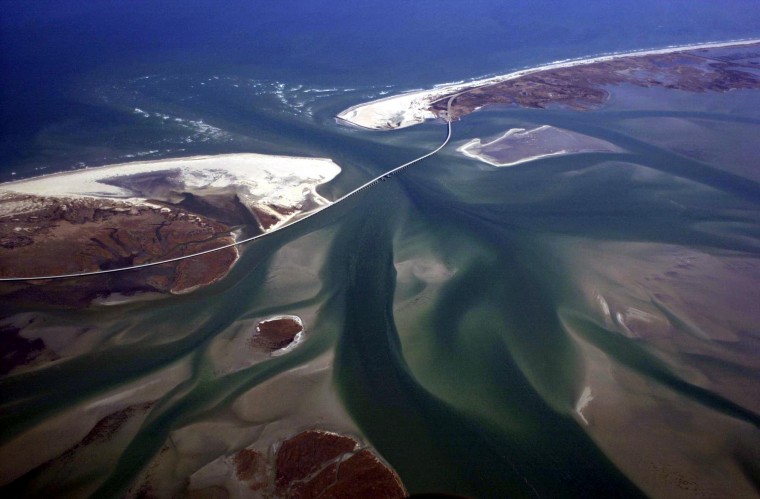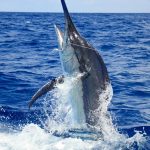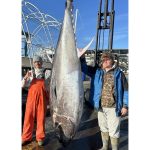Above: Oregon Inlet, which swirls with currents and ever-changing sandbars, is popular with local fishermen who use the ocean-to-sound passageway to fish and head for offshore waters. Photo Credit: Drew C. Wilson | The Virginian-Pilot.
The coastal engineer began his conference talk on Oregon Inlet with a joke – sort of.
Tom Jarrett summarized his career working to keep the frequently clogged Outer Banks inlet open to boat traffic as “34 years of accomplishing absolutely nothing.”
The crowd laughed, but the frustration in the room was obvious. He was speaking Thursday at the American Shore and Beach Preservation Association’s annual conference at the Virginia Beach Oceanfront.
A session was dedicated to Oregon Inlet, a main Outer Banks gateway to the Atlantic Ocean. Most experts agreed it’s time to try something new. But what?
Oregon Inlet, created by a hurricane in 1846, repeatedly fills in with sand, crippling the fishing and seafood industries that depend on the passage.
The most recent dredging effort provided a reliable route for only about six weeks, conference attendees said.
For anybody who might say let nature take its course, engineer Johnny Martin summarized his recent study that showed the positive economic effect of keeping the inlet open exceeds the cost of the work to do it.
Billy Edge, a professor at North Carolina State University, in his talk “Sand Bypassing and Jet Pumps” described the possibility of installing a system of sand pumps to suck sand from the waterway and dump it on land. That’s worked in some places and failed in others, he said.
Bill Hanson of Great Lakes Dredge and Dock Co., which has done work in Oregon Inlet, had a talk ready to go called “There Has to be a Better Way: Oregon Inlet Dredging.” He couldn’t make the conference that day but said in an email it’s time to stop the Band-Aid solution of small dredging projects that just fill back in.
“Why not look at doing larger projects digging deeper and wider, less frequently but more regularly,” he wrote. “Would require change in funding and contracting schemes, but time to start thinking about longer term solutions than just being restricted by federal appropriation cycles.”
The double-edged sword of the federal government was a theme in the discussion. On the one hand, someone has to pay for the projects. On the other hand, the federal budget and regulatory processes can make potential creative solutions hard to achieve.
Another hurdle is that Oregon Inlet is just a tricky problem to solve. The conventional wisdom is the sand that clogs the inlet comes from the north – the creeping of the Bodie Island spit – but researchers have also seen it come from the south. This complicates any potential pump, jetty or weir project.
While officials work on a permanent solution, fishing boats continue to pick their way through the inlet’s shoals.
“A great day of fishing” was the online report from the Oregon Inlet Fishing Center for Thursday. “Increasing numbers of Yellowfin Tuna, Blackfin Tuna and several nice Wahoo along with some Dolphin.”
This article was re-posted from pilotonline.com – please click here for original article.
Please see below to view other recent articles on this subject:
Oregon Inlet Shoaling Problem Deepens – April 2014
Time is Up for Oregon Inlet Task Force – April 2014
Oregon Inlet Jetties – the Unjustifiable Sequel in NC – July 2014
Commercial Fishing Boat Runs Aground in Oregon Inlet – November 2014






